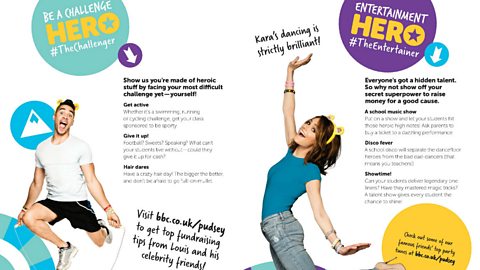Writing a guide
Structure
A guide might be a leaflet or handbook, giving instructions on a topic or procedure.
It is typical for a guide to use subheadingA word, phrase or sentence that is used to introduce part of a text. so that the reader can see the main points at a glance. The order of these headings will depend on the purpose of the guide. For example, if the guide is to encourage people to visit a tourist attraction, the key areas of interest may feature first with cost and a map appearing at a later point.
Language
As with all writing, the language should be suitable for the audience. In a guide aimed at children, the language will need to be easy for that age group to understand, but also exciting and lively enough to make them want to read it.
It is common to use imperativeLanguage that commands or instructs the reader. in a guide, eg âGo hereâ, âPay attention toâŠâ, âSign up nowâ â giving clear directions to the reader.
Example
Here is an extract from a ±«Óătv Children in Need guide. The purpose of the guide is to explain how to take part in challenges that raise money for charity.

- Each section has a heading that outlines the main topic of that part of the guide. Notice that the subheadings are short and bold to draw the readerâs attention to the crucial information.
- The writer has used the personal pronounWords like 'you', 'your', 'I' 'we' and 'our' that represent people or things. âyouâ and âyourâ to directly address the reader.
- Several persuasive techniques have been used within the guide to encourage the reader to get excited about the idea of fundraising. For example âcheck out some of our famous friendsâ top party tunesâ.
- Some sections with crucial information, such as the website address, are highlighted for emphasis.
Overall, the layout and language clearly guide the reader on how to get involved with fundraising for the charity.